comparable
当我们要进行对象的比较的时候,我们是不能直接用>、< 这些符号直接进行比较的。



在object 类中,我们知道可以使用equals方法来进行对象的比较,返回值是布尔值。如果我们要求返回值是整型的话,我们就要使用到comparable接口。
使用
class student implements comparable<student>{
public string name;
public int age;
public student(string name, int age) {
this.name = name;
this.age = age;
}
@override
public int compareto(student o) {
return this.age - o.age;
}
}
我们先来看一下comparable接口:
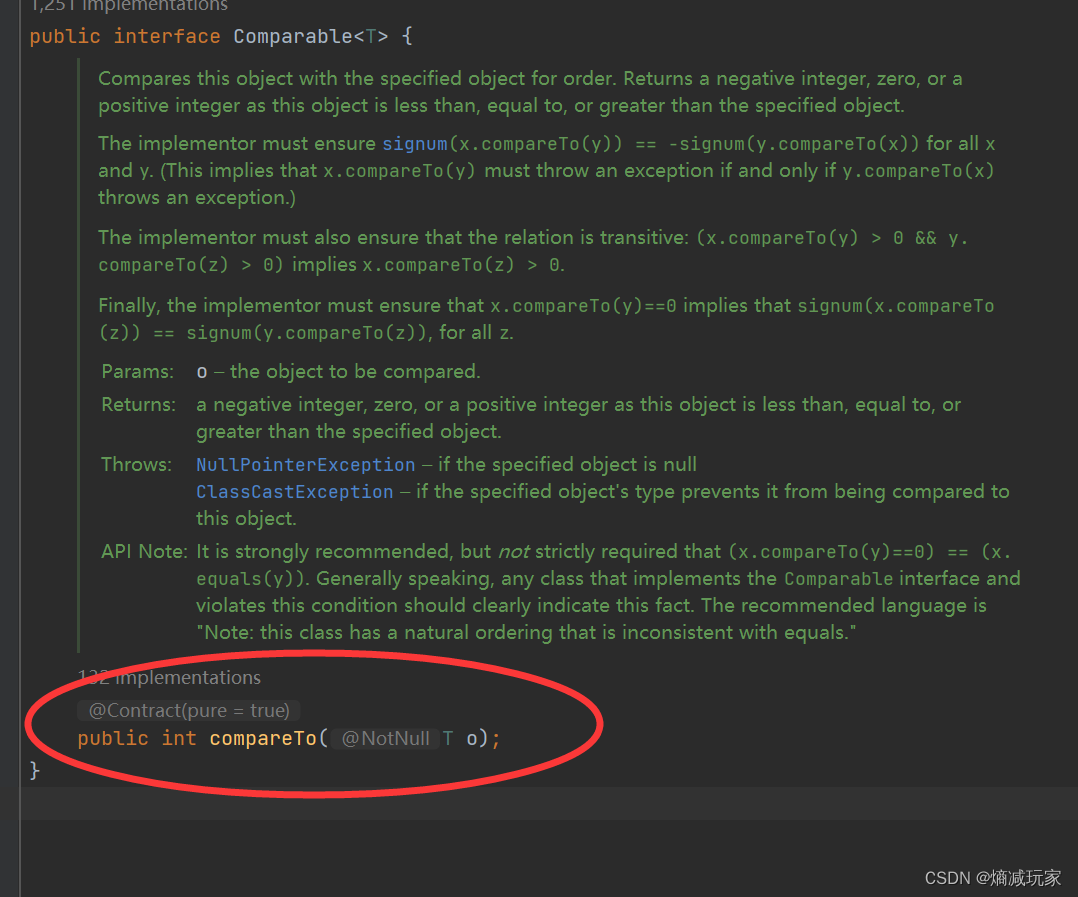
comparable接口中包含 compareto,因此我们需要重写这个方法,根据不同的比较需求来写不同的比较代码:

这里是实现age比较,如果是name比较,我们该怎么实现?


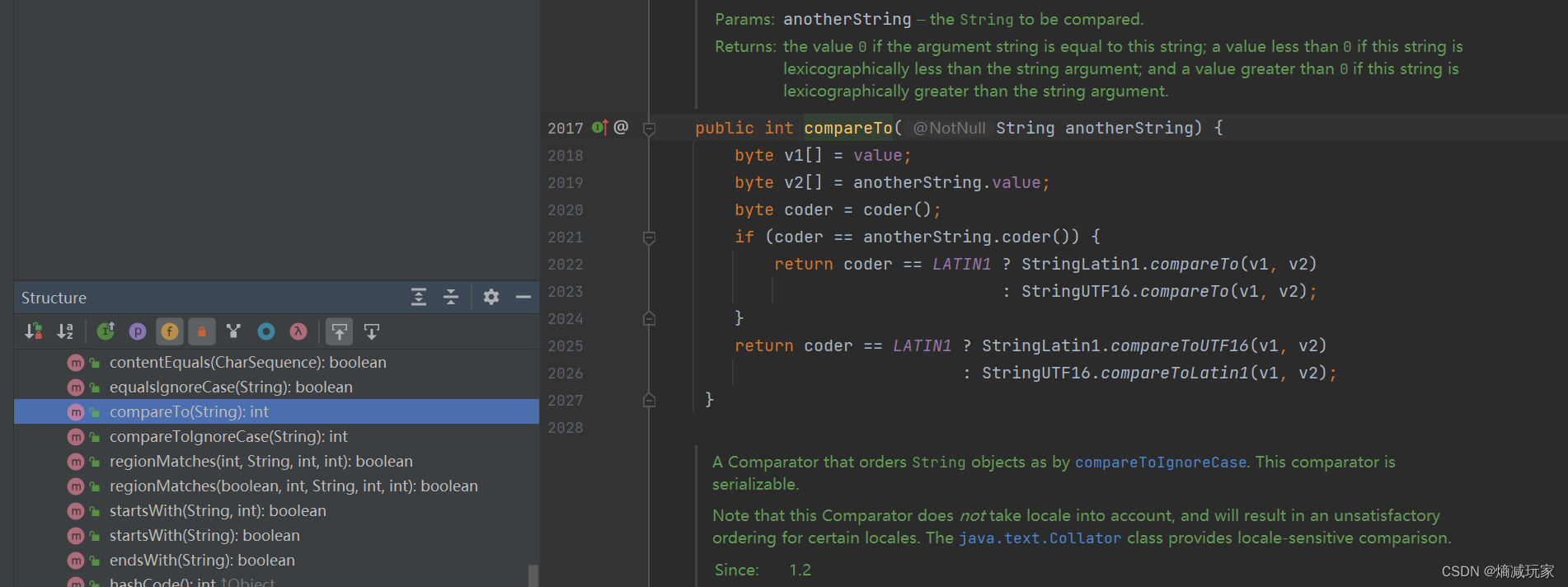
多个同类型比较
如果我们有很多个学生需要进行比较排序,我们第一时间会想到使用数组来存放,然后通过数组排序(array.sort())来进行比较排序。
那array.sort 是怎么进行排序的呢?
现在这个类没有comparable接口:
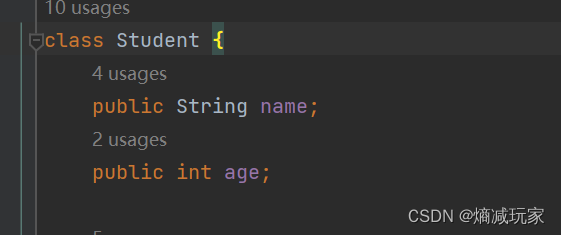
我们一运行就会发生异常:

这是是student类不能转化为comparable,说明array.sort的排序需要该类实现comparable接口。
array.sort 会调用 compareto 方法进行比较。
模拟实现array.sort(冒泡排序法)
public static void mysort(comparable[] comparables) {
int flag = 1;
for (int i = 0; flag == 1 && i < comparables.length - 1; i++) {
flag = 0;
for (int j = 0; j < comparables.length - 1 - i; j++) {
if(comparables[j].compareto(comparables[j+1]) > 0) {
comparable tmp = comparables[j];
comparables[j] = comparables[j+1];
comparables[j+1] = tmp;
flag = 1;
}
}
}
}
局限
由于compareto 方法只能重写一次,实现不了重载,因为参数就是所在类的类型(也就意味着这是固定的参数),所以它的局限性就是只能进行一种数值的比较,不能进行多种数值的比较,因此我们一般用在固定的比较,用在默认的比较上,如果要实现不同的数值的比较我们会用到比较器comparator
comparator
我们可以使用comparator实现不同属性比较的类,这里还是以学生类(包括姓名和年龄)作为例子:
public class namecomparator implements comparator<student> {
@override
public int compare(student o1, student o2) {
return o1.name.compareto(o2.name);
}
}
public class agecomparator implements comparator<student> {
@override
public int compare(student o1, student o2) {
return o1.age - o2.age;
}
}
之后我们就可以使用这些比较类的方法了,和类的使用是一样的,先创建对象,再使用里面的方法:
public static void main(string[] args) {
student stu1 = new student("zhangsan",10);
student stu2 =new student("lisi",20);
agecomparator agecomparator = new agecomparator();
int ret = agecomparator.compare(stu1,stu2);
system.out.println(ret);
namecomparator namecomparator = new namecomparator();
ret = namecomparator.compare(stu1,stu2);
system.out.println(ret);
}
如果你需要使用array.sort的话,只需要再传比较类就可以了:
agecomparator agecomparator = new agecomparator();
arrays.sort(students,agecomparator);
namecomparator namecomparator = new namecomparator();
arrays.sort(students,namecomparator);
cloneable
当我们需要进行对象的克隆(复制)的时候,我们可以使用clone的接口,这是object类的,在上一篇文章我们就提到其中的三个方法,现在我们就来将克隆方法(clone)
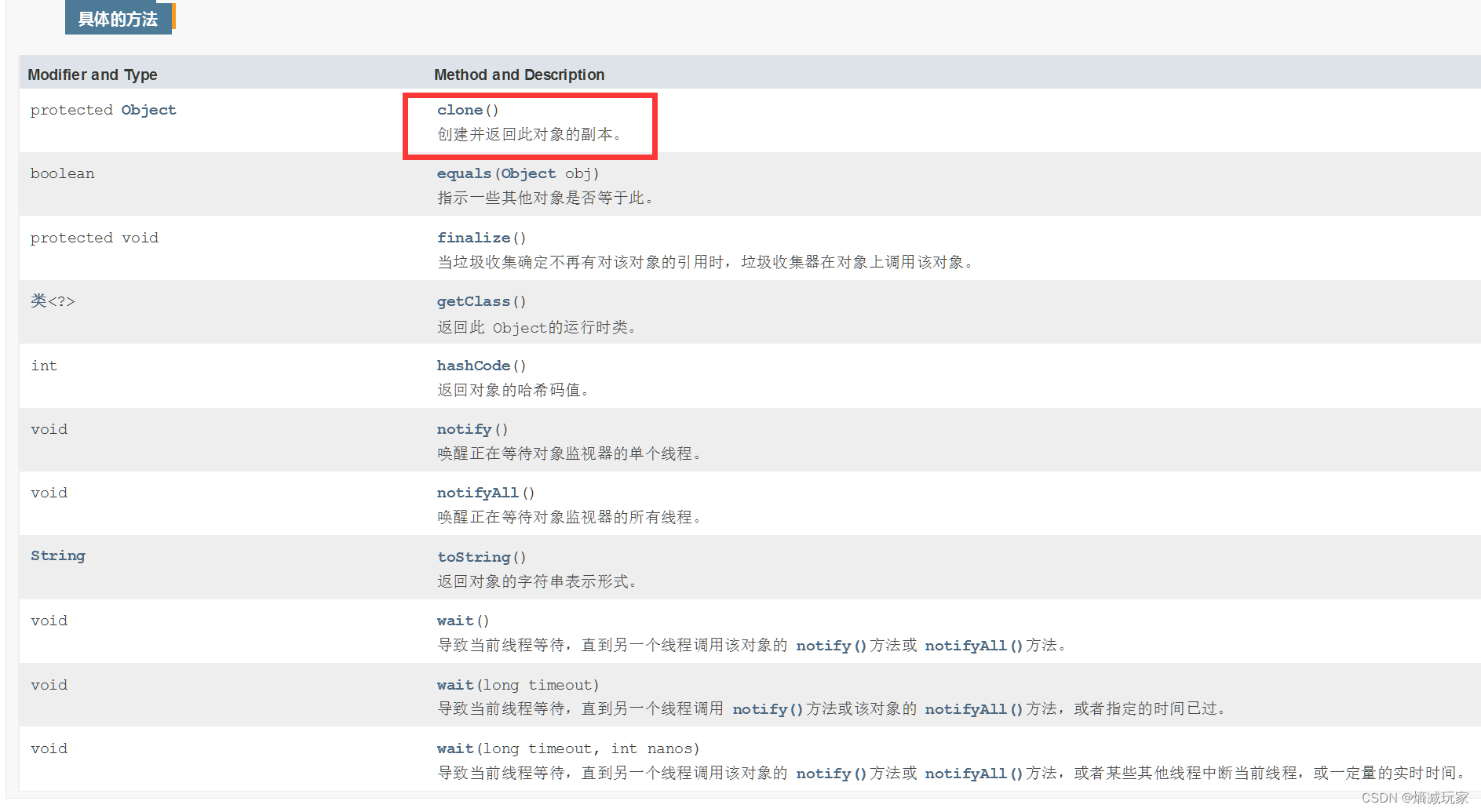
使用

快捷键如下:
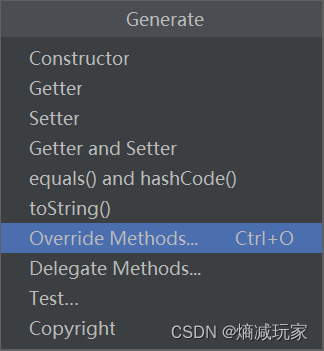
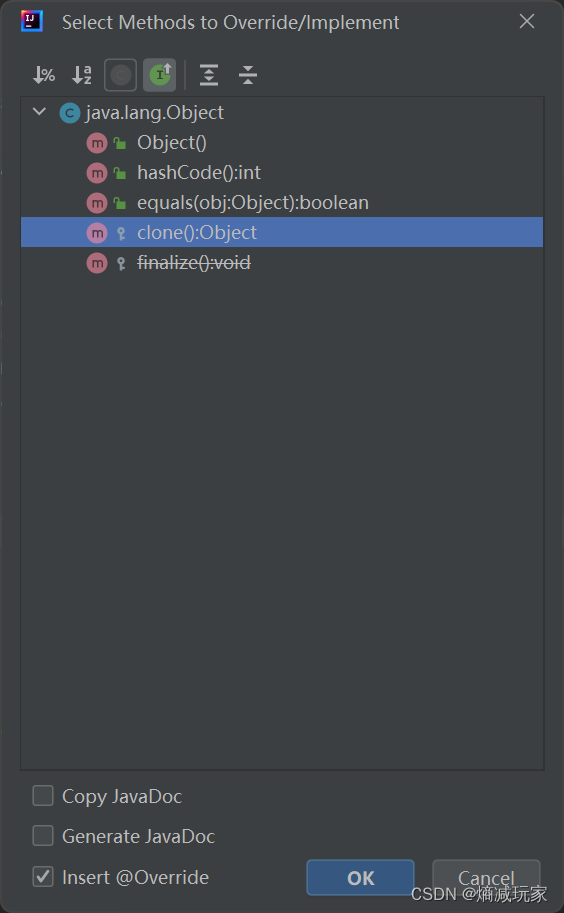
编译器会帮我们生成如下的代码:
@override
protected object clone() throws clonenotsupportedexception {
return super.clone();
}

student stu2 = (student)stu1.clone();

public static void main(string[] args) throws clonenotsupportedexception{
student stu1 = new student("zhangsan",14);
student stu2 = (student)stu1.clone();
}
但是当我们运行的时候会发现下面的异常:


public class student implements cloneable
完成上述步骤我们就可以实现克隆了:


以下面的代码为例:
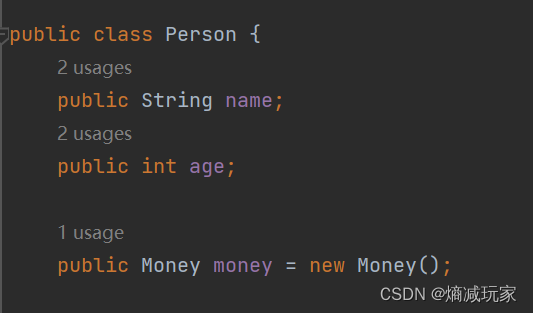

我们来克隆一个per1:
person per1 = new person("zhagnsan",10);
浅拷贝示意图:
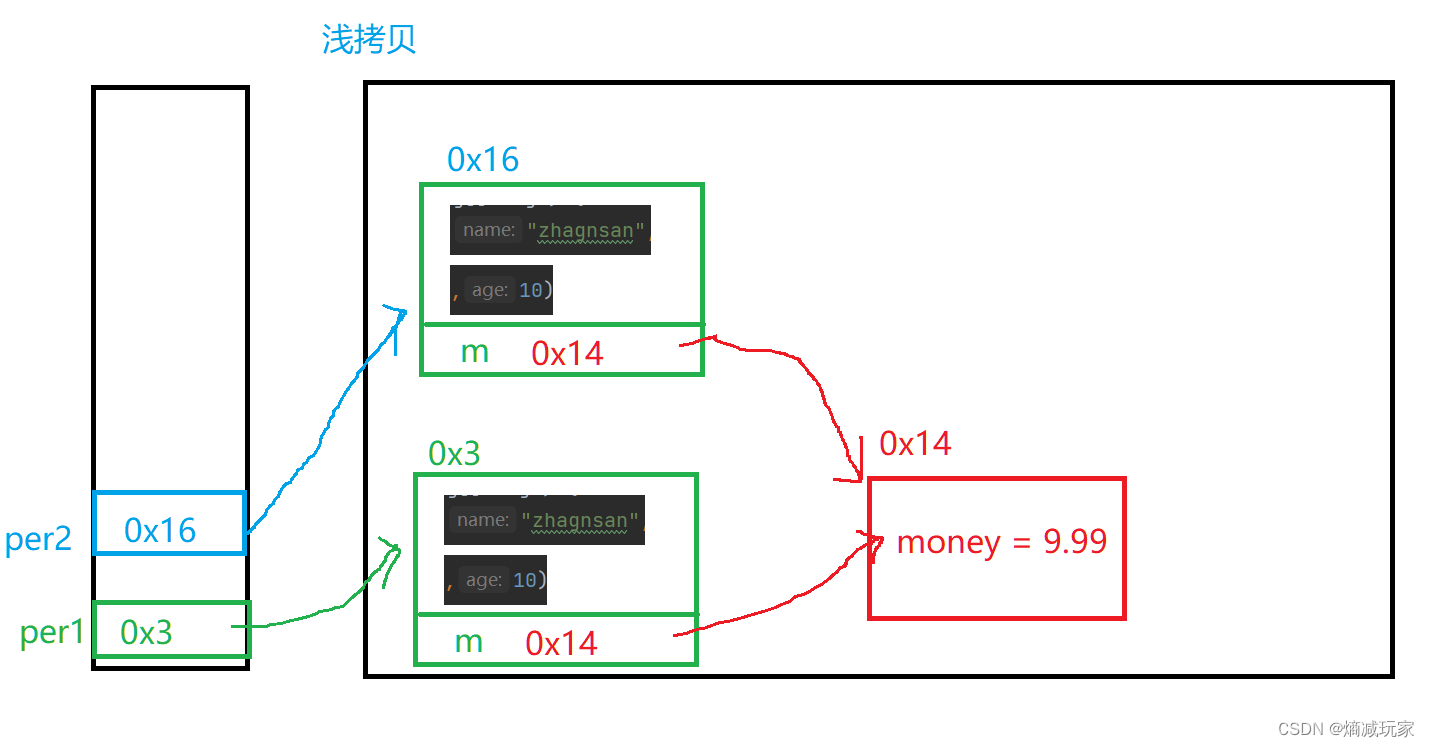
深拷贝示意图:
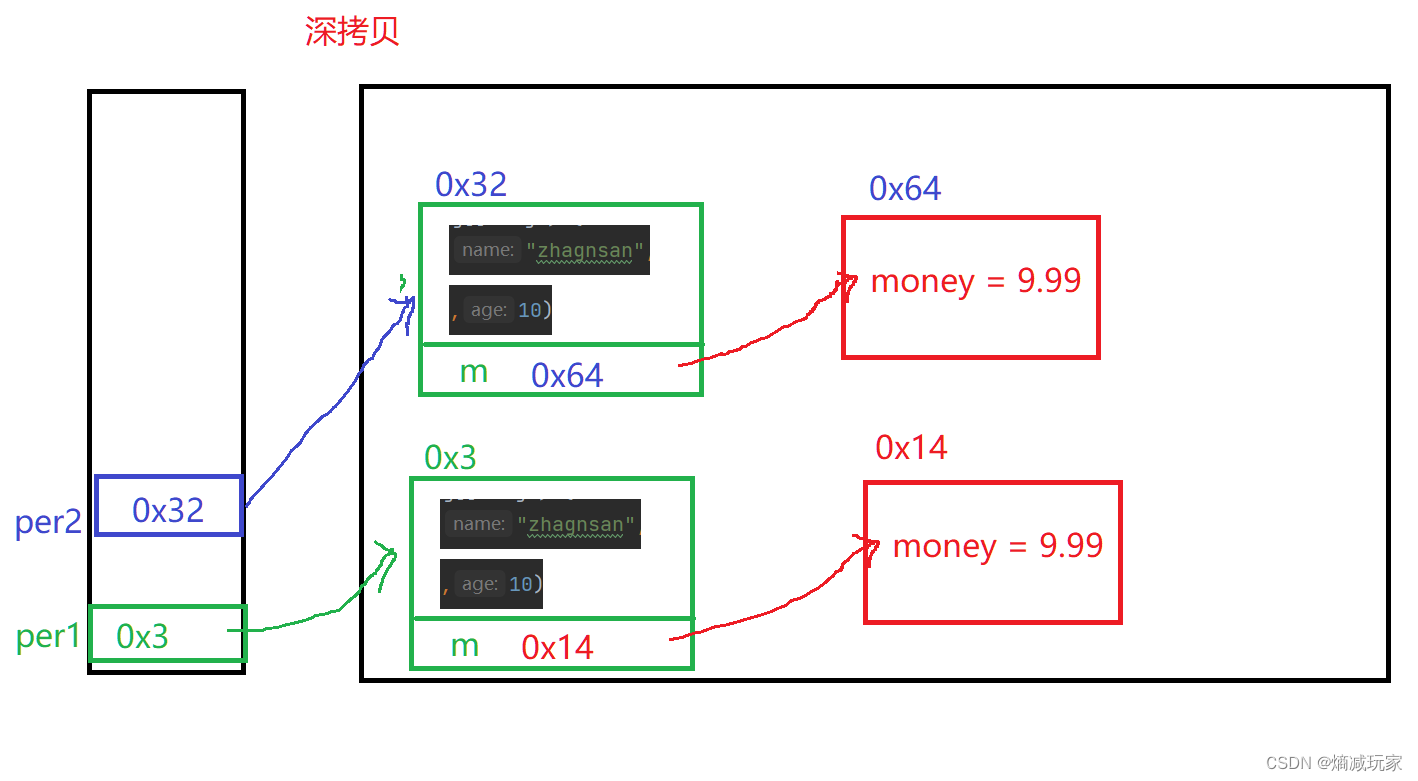
浅拷贝
通过上面的示意图,我们来做一下题目,说明下面的运行结果:
public class money {
public double m = 9.99;
}
public class person implements cloneable{
public string name;
public int age;
public money money = new money();
public person(string name, int age) {
this.name = name;
this.age = age;
}
@override
public string tostring() {
return "person{" +
"name='" + name + '\'' +
", age=" + age +
", money=" + money +
'}';
}
@override
protected object clone() throws clonenotsupportedexception {
return super.clone();
}
}
class test{
public static void main(string[] args) throws clonenotsupportedexception{
person per1 = new person("zhagnsan",10);
person per2 = (person) per1.clone();
per2.money.m = 6.6;
system.out.println("per1:"+per1.money.m);
system.out.println("per2:"+per2.money.m);
}
}

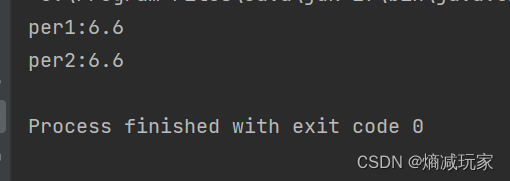
这里显而易见,浅拷贝后per1和per2是共享money的,所以有一个人的money发生改变,另一个人的money也会发生改变。
深拷贝
我们知道深拷贝需要再拷贝多一份全新的被包含的对象,所以我们需要实现被包含的对象的拷贝:
public class money implements cloneable{
public double m = 9.99;
@override
protected object clone() throws clonenotsupportedexception {
return super.clone();
}
}
这是第一步,下一步我们需要在包含该类的类中的clone方法调用money中的clone方法,才能实现完整的深拷贝工作:
所以我们要修改person中的clone方法:
@override
protected object clone() throws clonenotsupportedexception {
person tmp = (person) super.clone();
tmp.money= (money) this.money.clone();
return tmp;
}
现在再思考一下,下面的代码运行结果是什么?
public class money implements cloneable{
public double m = 9.99;
@override
protected object clone() throws clonenotsupportedexception {
return super.clone();
}
}
public class person implements cloneable{
public string name;
public int age;
public money money = new money();
public person(string name, int age) {
this.name = name;
this.age = age;
}
@override
public string tostring() {
return "person{" +
"name='" + name + '\'' +
", age=" + age +
", money=" + money +
'}';
}
@override
protected object clone() throws clonenotsupportedexception {
person tmp = (person) super.clone();
tmp.money= (money) this.money.clone();
return tmp;
}
}
class test{
public static void main(string[] args) throws clonenotsupportedexception{
person per1 = new person("zhagnsan",10);
person per2 = (person) per1.clone();
per2.money.m = 6.6;
system.out.println("per1:"+per1.money.m);
system.out.println("per2:"+per2.money.m);
}
}

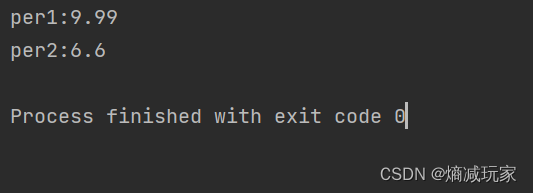
深拷贝已经重新将money拷贝多一份了,所以per2的money改变了并不会影响到per1的money.






发表评论